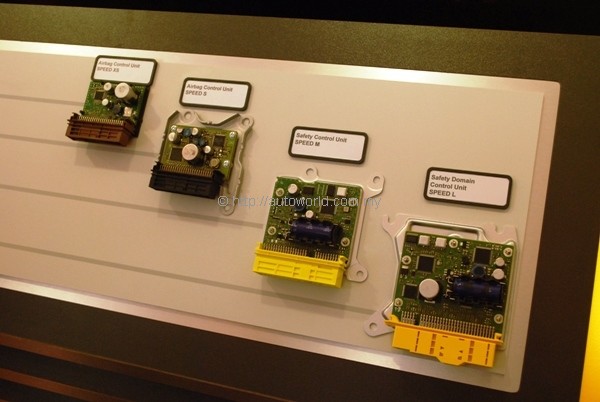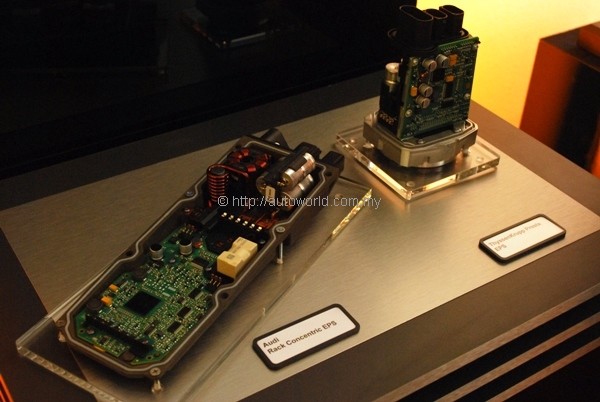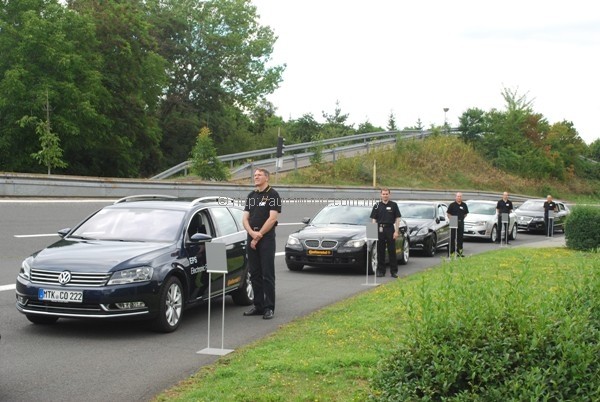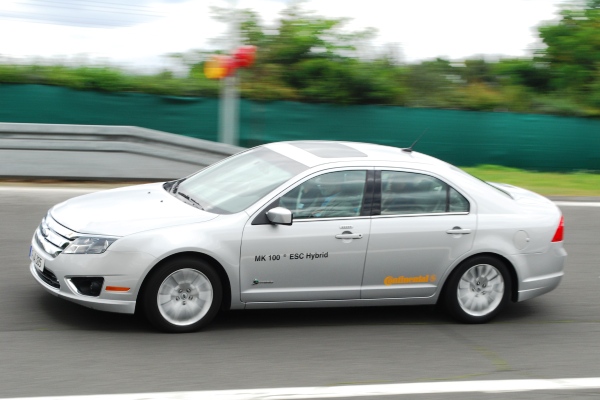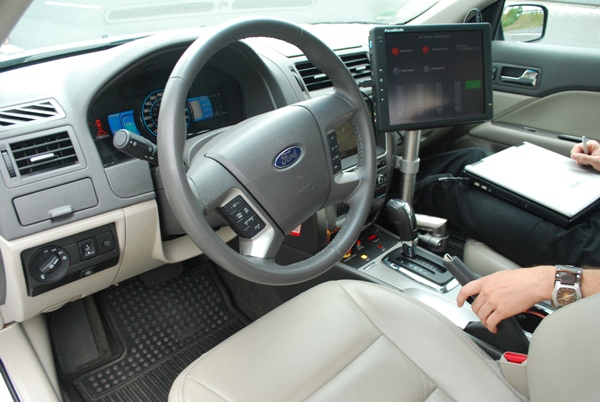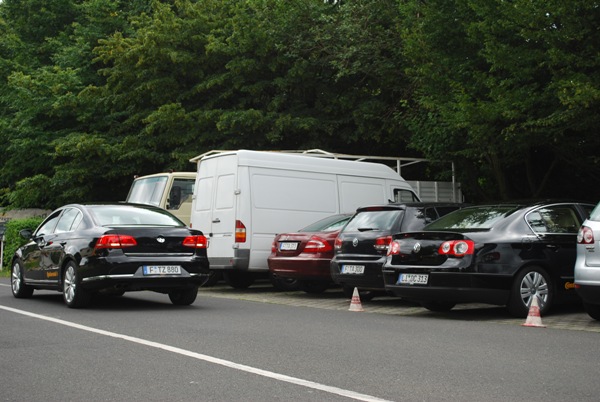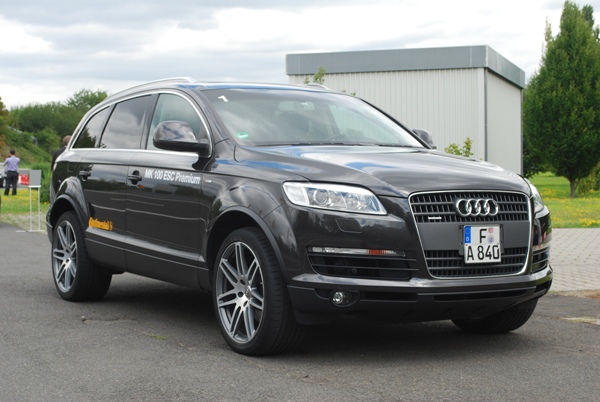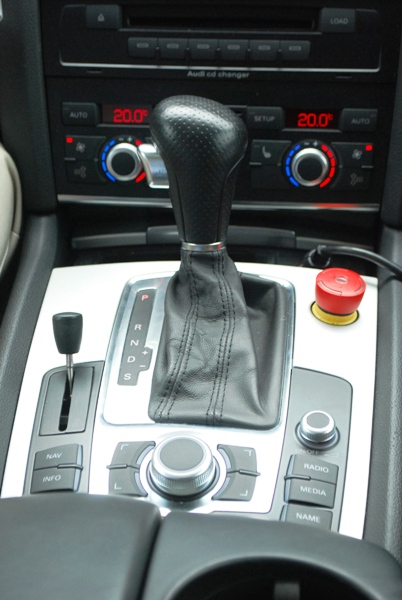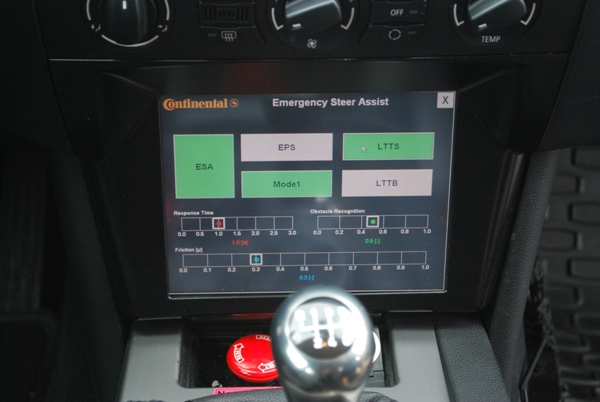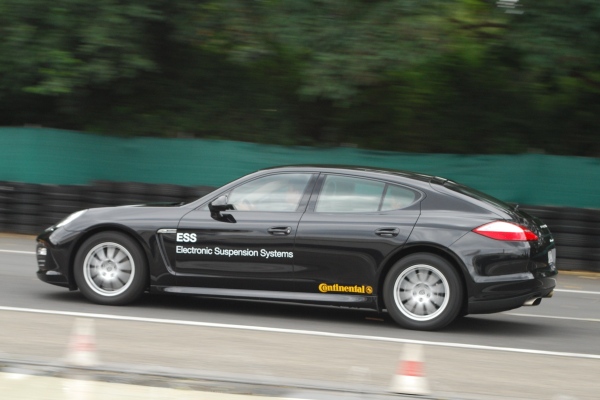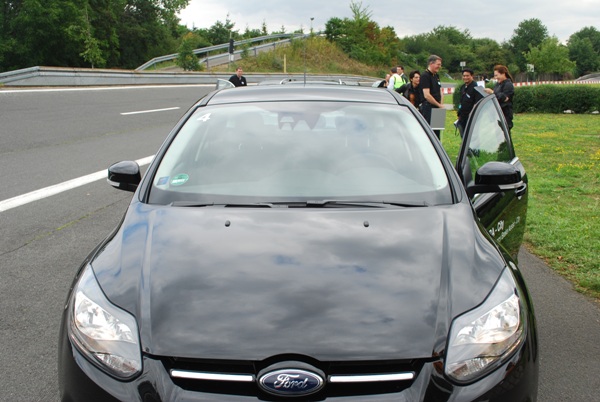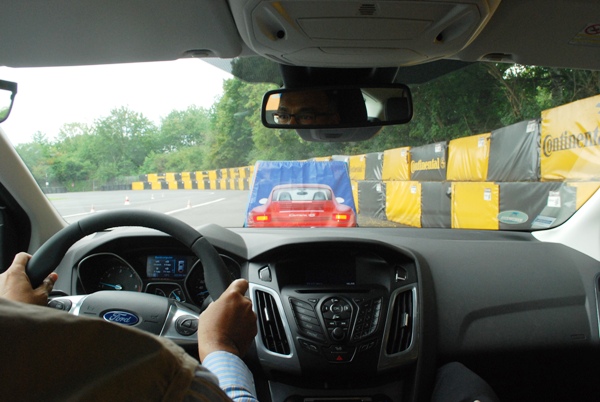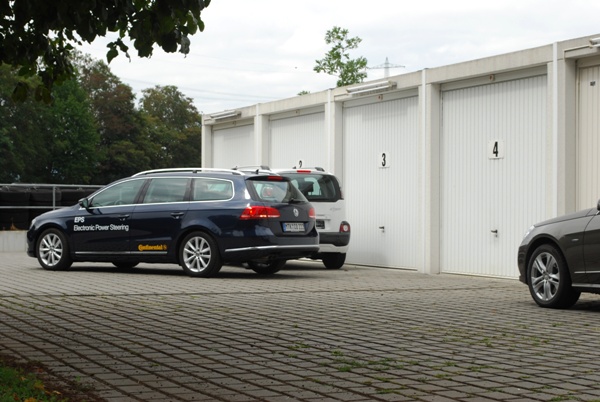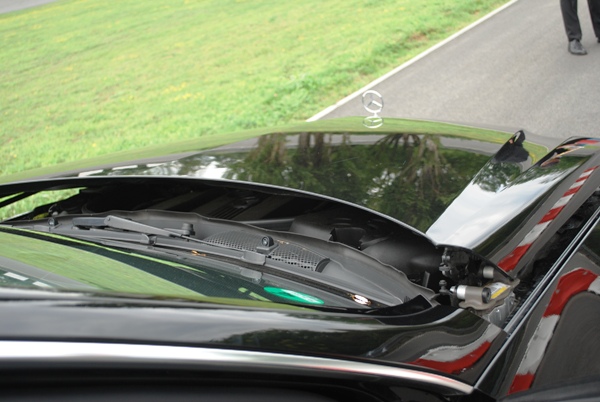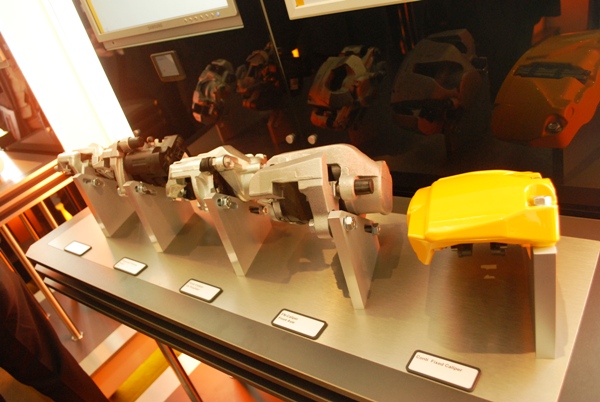Continental Automotive Group – Tour concludes at Chassis & Safety division
The expertise of Continental’s Chassis & Safety Division covers the field of driving safety and dynamics. Products under its portfolio include brakes, chassis control systems, sensors, driver assistance systems, airbag electronics, and air suspension. This division has access to 57 plants, research centres and test tracks spread in 19 countries worldwide.
At our recent tour of Continental’s facilities in Germany, our final stop was at the Chassis & Safety Division’s main base in Frankfurt. It consists of five business units – Electronic Brake Systems, Hydraulic Brake Systems, Sensorics, Passive Safety & Advanced Driver Assistance Systems, and Chassis Components. The business units develop a whole suite of safety systems, all of which are parked under the ContiGuard safety concept.
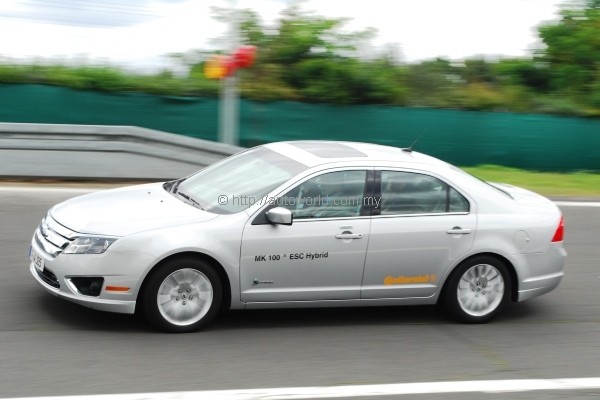 |
| Ford Fusion Hybrid Car |
Essentially, ContiGuard interlinks the various safety systems of the car, clustered into three functions – driver assistance, chassis control, and occupant protection – to provide the best possible protection in all driving and traffic conditions. ContiGuard is modular and scalable, meaning that what’s included and what’s not can be tailored to the requirements of various markets and clients.
The Chassis & Safety Division’s base in Frankfurt also houses a little test track like Regensburg, on which we were able to experience some of the division’s handiwork first hand. There weren’t exercises for us to test their airbags, but we did have the opportunity to try out some pretty nifty equipment, one of them being the Rear Traffic Crossing Alert (RTCA) system. RTCA is essentially a reverse sensor, but rather than just detect obstacles directly behind your car, it also scans a 120 degree arc behind your vehicle watching out for approaching vehicles as you reverse out of the parking slot. Audio and visual warnings are flashed when such vehicles are detected.
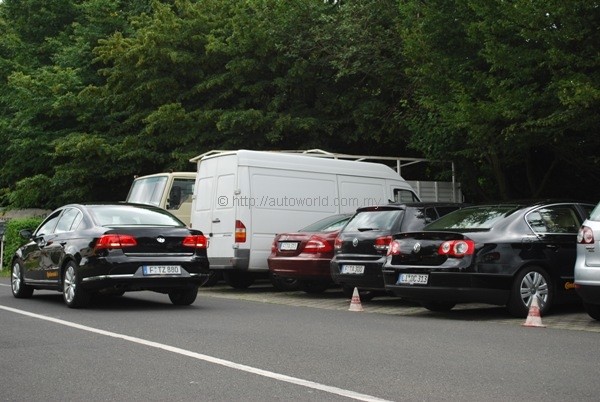 |
| Rear Traffic Crossing Alert helps you watch for passing cars as you reverse out of your space. |
During the demo, the group’s resident smart alec (i.e. me) had to point out that such a system is wholly unnecessary if one simply reverse parks. That, then, brought us to a little bit trivia on European parking practices. You see, reverse parking is not only not widely practiced there, but it is outright disallowed to reverse park into a slot and have your exhaust pipe facing buildings. So, RTCA is useful after all.
On the topic of parking, we all know how some drivers are stumped by parallel parking. In recent years, German manufacturers like Volkswagen and BMW have introduced parallel park assist systems that scan for parking slots of suitable lengths, and then help steer the vehicle as you reverse into the slot. The driver maintains control of the vehicle’s forward or reverse motion, while the system calculates the needed steering angles and operate the steering. It works with both manual and automatic transmissions, but the steering rack must feature electric power assist.
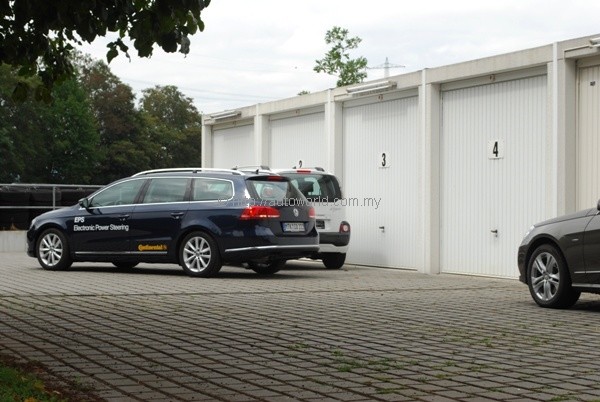 |
| Parallel parking assist. |
For the driving purists, such developments will only further accelerate the eventual demise of hydraulic power steering, which are still regarded to provide superior driving feel compared to electric racks. However, the fact is that electric power steering systems are cheaper to build, cheaper to maintain, and far easier to be integrated with the up coming generation of steering assist systems. Indeed, we hear that the next item in steering development will be steer-by-wire, where the steering column itself is obviated, replaced by electrical impulses traveling back and forth between the steering wheel and motor.
Still on the topic of steering, we now come to Emergency Steer Assist system which prompts the driver on which way to react when attempt to steer around an obstacle. The system is integrated with a field of sensors placed around the vehicle to give it awareness of all nearby moving objects. In the occasion where evasive action is needed, the system calculates the safest and smoothest path that the vehicle can take whilst taking into account the relative positions of surrounding objects.
 |
| Instruments for the 530i Emergency Steer Assist prototype. Yes, it was a manual, and it was fun. |
We tested this particular system in a BMW 530i manual, which, by the way, I just have to compliment for its superbly-weighted clutch and slick gear change. Taking evasive maneuvers in this specially modified E60 530i, I could feel the steering giving a little tug as you turn it, as if nudging you in the recommended direction. Once you’ve swerved around the obstacle, the steering tugged back the other way to prompt you to counter-steer and remain on the lane. As we increased our speeds in each successive try, we found that the steering increased its ‘tugging’ force accordingly.
Steering around obstacles requires that the driver actually be focused on the task of driving. In instances where he isn’t, there is going to be a problem, and that is where we have the Emergency Brake Assist system coming into play. We are intimately familiar with this system already, thanks to Volvo’s Collision Warning with Full Auto Brake that is fitted in the new S60 and XC60. For our demo in Frankfurt, however, we had the all-new Ford Focus, which is due to reach Malaysian shores next year. The test car was an actual production unit, fitted with the City Safety Emergency Brake Assist system. During the test run, we drove the Focus straight towards an obstacle at 30kph. Although the obstacle was nothing more than an oversized balloon, it was still unnerving to drive towards it and withhold the urge of stepping on the brakes. In our couple of test runs, the Focus stopped just centimetres short of the obstacle.
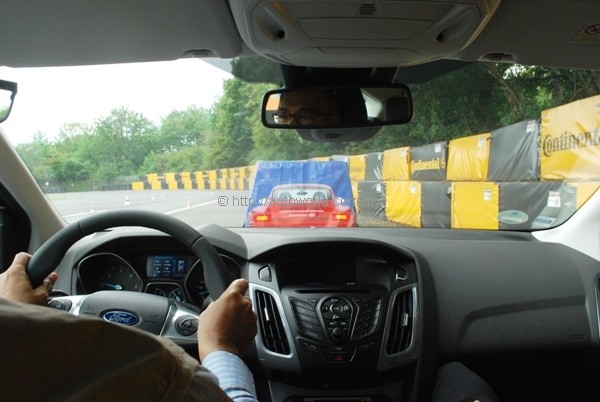 |
| Testing the brake assist function. |
Our test car was equipped with the Powershift dual-clutch transmission, but we have been told that manual versions are offered with the system as well. When used with stick shift vehicles, the engine will undoubtedly stall as the system applies full braking power without disengaging the clutch. However, in the interest of avoiding a collision, allowing the engine to stall is a perfectly acceptable compromise. Better to have bruised ego than a bruised forehead to be sure. We are uncertain if Malaysia-bound units of the all-new Focus will feature this system, but we won’t bet on that just yet.
One new product that recently released by the Chassis & Safety division, but which we did not have the opportunity to test during our visit is a new fixed-type caliper disc brake for mid-sized passenger cars. Designed primarily for use in the front axle, the caliper can also be adapted for use at the rear. It’s key selling point is a 1.5kg reduction in mass compared to fist-type calipers of comparable design.
“We are helping vehicle manufacturers to further reduce the CO2 emissions on new models. Weight is a key factor in this respect. At the same time, light-weight design must not be allowed to create problems in other areas. In order to prevent squeal on fixed-type caliper brakes, we have used our experience with fist-caliper brakes to come up with an innovative fixed-type caliper design”, said Dietrich Golz, Head of Development for Wheel Brakes at the Hydraulic Brake Systems Business Unit at Continental’s Chassis & Safety Division.
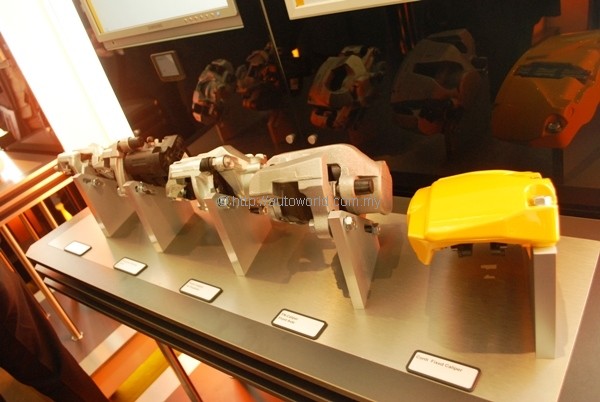 |
| The new fixed caliper brake by the Chassis & Safety division. |
The development of this new brake caliper is inline with increasingly stringent and ambitious targets of fuel saving and emission standards being implemented worldwide. Squeezing the industry from other ends are safety regulations that are no less tough. Consumers, even those from emerging markets, are also getting increasingly educated and aware of such requirements.
In such markets, it is not only important to ensure that products are up to scratch, they are also required to remain cost competitive. The challenge for the folks at Continental then, is to ensure that the innovations that we had the opportunity of trying out in this trip can be made available at the most competitive prices without sacrifice in quality. No pressure there.






